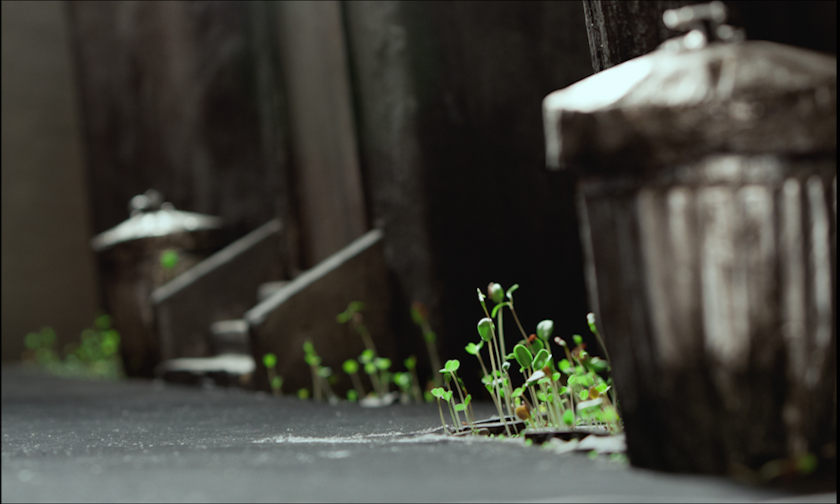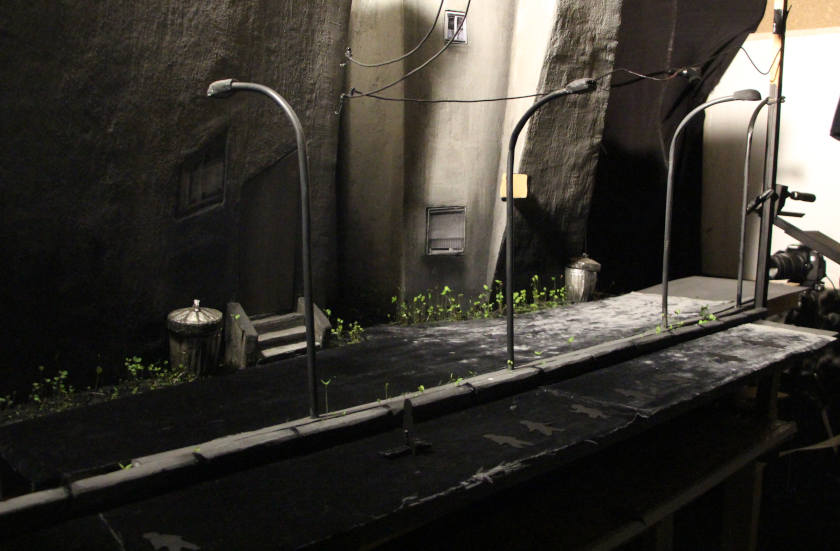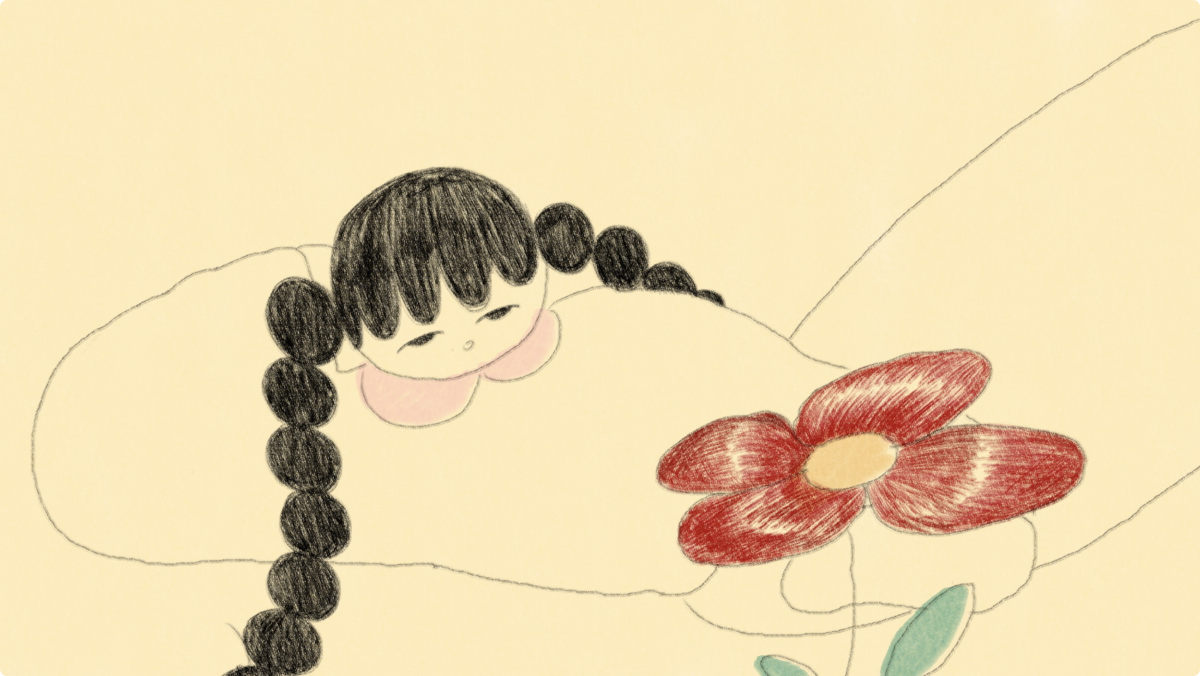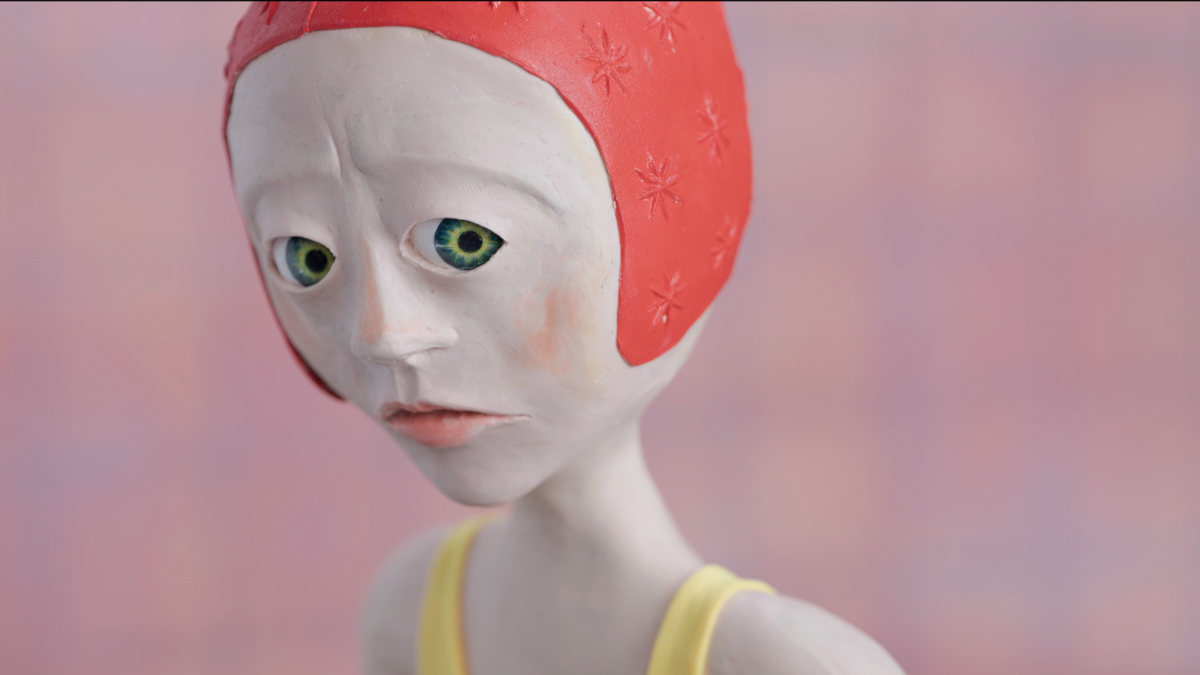Rumours by Nicole Aebersold

There is something in the air. /It spreads. / Everywhere.
Synopsis: "Rumours“ shows the slow and silent occupation of an urban space that is inscrutable until it`s too late.
This is the two-line synopsis for Nicole Aebersold's experimental film Rumours, which was nominated for a Student Academy Award 2019 , and made as part of the graduation studies at Filmuniversität Babelsberg Konrad Wolf, Germany. Nicole Aebersold talks to Zippy Frames about her film, which shows the relationship of natural and human-made space and their interaction.
ZF: Did the idea come from a personal experience, observation or it was suggested by somebody else? And why the title 'Rumours' and not 'Decay' for instance?
NA: There are two things which were essential to develop this idea. One is a story by Franz Hohler, "Die Rückeroberung", (written in 1982). In it, Hohler describes how animals come to live in the city. He describes very precisely and with great humor how the unthinkable and absurd becomes reality. In contrast to „Rumours“, the focus of Hohler's story remains on the people, and how they react to the change. I read this story as a teenager and it always stayed with me. The other is my fascination for the medium of time-lapse. I'm interested in making imperceptible processes visible.
At one point these two things came together and the idea for "Rumours“ was born. In Hohler`s story, the paradigm of civilization shifts from the people to the animals, but the actions of both are already in the realm of perception we are used to. Therefore, my interest in imperceptible processes lead me to discard these protagonists and search for a third.
Watch Rumours
I have deliberately chosen this title to give the audience the opportunity to discover and interpret the metaphorical level of the film for themselves. A rumour works like the developmental processes of the plants in the film. It starts quietly and hidden, spreads on paths that are difficult to trace, becomes bigger and more powerful, until it has become a reality in people's minds.
The film was finished and got its title at a time when the word creation "alternative facts" was first publicly discussed. At that time this was considered a joke, but we can see very clearly today what became of it. Rumours can lead to decay, to a quiet and silent change that is only noticed when it is too late.
ZF: Since this was a student film, how did you proceed in terms of schedule? And did you have to script / storyboard first before shooting?
NA:The university framework certainly helped creating the film by alleviating the economic pressure. Overall, we were able to work quite freely. The film is experimental not only in its expression and narrative, but also in the way it was made.The whole process adapted to changes because I wanted to give the plant development maximum space and respond to its specificities and peculiarities. This openness was absolutely necessary in order to capture the aesthetics of the plant movement in its entirety and make it usable for the film.
As a script we had at the beginning only start and end point and 5 stages of plot development. We then created images for each of those five stages and put them together in the final cut. We chose a very untypical approach for animation, which is due to the work with plants.
ZF: Can you tell us a bit more which came first in your techniques? Time-lapse photography, stop-motion? How did you coordinate between these different techniques?
NA: The interweaving of time-lapse and stop-motion-animation in the same image was central from the start. This was a big challenge and it took a lot of preparation before we could shoot the scenes in question. Since we did not use digital compositing, we had to know in advance exactly how the plants would behave in order to plan the animation. The plants are never "asleep", they are constantly moving, so the animation had to take place around the clock. We could only move the figures every 15 minutes. That was not manageable in our small team, so we made an event out of it and called it the first and second "AniMarathon". These were two shooting phases of five days each, in which the animation was created in shift work. Almost twenty people supported the project in this way, both animators and people who were doing animation for the first time. For these events, many aspects had to be taken into account, such as the preparation of the workspace, the characters and the animation path, tools and systems so that each person knows exactly where the process of animation is at. And of course light for the plants, food for all participants and entertainment to pass the time between the images. It was great and in many ways the highlight of the production, and it worked!
ZF: Did you shoot over a continuous period of time or did you have breaks and come back with the shooting?
NA: The time-lapse recordings ran continuously for two and a half years. In this time, I was constantly on site. We had to react quickly when something exciting was about to happen within the plant development. We were then able to select from the archive of these shots for the edit. Of course, we also shot specific scenes that had to be monitored. Within the same time there were special shooting phases: the live action scenes, which we shot at the university in the studio, the animation of the rain sequences, and the previously described Animarathon sessions in which time-lapse and animation were shot together.
ZF: Any particular challenges you faced during the making of the film? Was it the animation process, the compositing, perhaps time management?
NA: The project as a whole, and especially the combination of the two techniques was very demanding, but so was the development of the narrative.The development of the material took place simultaneously with the implementation, so everything was always in a permanent state of change. We observed plants for weeks and documented how they grew, how they moved. We determined how to portray the people without taking the focus away from the plants. We developed a special animation technique. We built sets that had to be suitable for plants as well as for animation.

The decision to put plants in center had a lot of consequences not only technical but also how the story can be told. We stretched the boundaries of traditional filmmaking and tried something new, which is exciting, but also meant we were facing a lot of difficulties because we took an unknown path and we didn't have many role models to follow.
ZF: I was wondering how you collaborated with your sound editor. These hissing sounds stay long after you watch the film.
NA: The collaboration with Christoph Undisz was ideal because he is both a musician and a sound designer. He was involved in the project very early on and created the sound together with the film, and in a similar procedural approach as we did with the images, rather than after the film was finished. Because of this we could work very closely and spend a lot of time discussing what plants would sound like. We chose not to follow the classic approach of layering a musical composition on top of the sounds that accompany the action of the film, but rather combine our plant sounds and the everyday noises to one theme that is musical without containing regular music.We initially wanted to work in a much more noisy way, but soon realized that there was a need for a continuous musical theme, which at certain points would directly respond to the image. Christoph then created this great composition alongside the final edit. He won the award for best sound creation at Rencontres Cinéma-Nature Festival.
ZF: Were you surprised by the Student Academy Award nomination? Did it affect you in any way or it was just another distinction among the many?
NA: The film was nominated in the category alternative / experimental where the focus is on new approaches in filmmaking. The nomination is a great honor and it shows that the film can be appreciated for what it is. But yes, I was surprised because the film was certainly not met with undivided enthusiasm. There are people who really like it, but there is also a lot of rejection. The critique often centers around core aspects of the work, for example the intentional lack of a classical narrative structure: the film doesn't offer a protagonist, only the amorphic plant antagonists. The humans are only seen as shadows or as their changing surroundings. I understand that it may be challenging for the audience to identify with this void. Another aspect that makes this movie somewhat hard to just consume as entertainment is the composition of fantastical and realistic elements. The choice to arrange the stylized plant sequences alongside the harsh realism of the kitchen scenes was deliberate, but also a point of repeated contention during the creation of the film as well as in the reception. It might make the audience feel uneasy, not just because it is aesthetically complex, but also because it violates the neat borders between the fantastic realm and ours. These decisions were all made consciously and have a decisive impact on the character of the film. However, the most important thing for me is that all these decisions are still valid for me today.
The appreciation of the Academy encourages me to continue on my way. I see it as a confirmation that it is necessary to defend the own artistic convictions, and that it is important to try what seems impossible, even if no one else believes in it and it is not understood right away.
ZF: Would you describe Rumours as a parable of our urban life or is it something else? Is it nature overtaking our human existence perhaps?
NA: The conflict between nature and culture is definitely a theme of the film. In a sense it is a commentary on a worldview in which humans are separate from nature, not dependent on it and elevated above it. Just as facts can never be detached from reality, humans remain inseparable from nature, their environment, their habitat and their living conditions.
For me personally, the film stands as a metaphor for change itself, especially if it occurs not as a bombastic event, but as a quiet, creeping process that is first not noticeable, maybe not even taken seriously, but eventually leads to a new reality. Because this change is so gradually and only visible from a long term perspective or in hindsight, we seem to struggle with addressing it, let alone handling it appropriately.
Looking back on the film now, I find it somewhat unsettling how both aspects are shaping our experience right now in the pandemic. The tagline I wrote in 2017 reads like a description of our current situation. We are exposed to a disaster that confronts us with our inseparable entanglement to nature. At the same time, the spread of the virus and the spread of misinformation about the virus first occurred under our collective radar, but are now amplifying each other to a destructive degree.
Film Review (Vassilis Kroustallis):
Rumours is a slow but forceful change of power status, as inevitable as life itself. Humans are the mere silhouettes here; their shots are mostly shot against a static camera, and their fleeting impressions are accompanied by shots of domestic decay. Overturning the tables, the film shows decay as a human condition (and not as a natural condition), nature itself is represented as a carefully lit, almost glowing force at night, with brief but still strong movements. Experimental here borrows from the suspenseful, and the film noir tradition; entering and breaking a house is what all those plants will gradually do, step-by-step. Aebersold builds her case for Rumours (with the help of the tremendously evocative sound design by Christoph Undisz) as a transition that needs to be accepted in its own terms. The film stirs your visual senses and olfactory palate; it is suitably lightweight in its execution, suspenseful, and admirable in its frankness.
Credits:
Director: Nicole Aebersold | Editor: Doreen Töppel | DOP: Clemens Barth | Sound design: Christoph Undisz | Producer: Sonja Menzel- Gnizia
Production company: Filmuniversität Babelsberg KONRAD WOLF

About Nicole Aebersold:
Nicole Aebersold is an animator and filmmaker. Her interest lies in mixed-media projects and stop-motion animation. She studied animation at Filmuniversität Babelsberg KONRAD WOLF. Her BFA graduation film "Rumours" was nominated for the Student Academy Award 2019. Since graduating, she collaborated with ensemble exxj and Kabinetttheater Wien on different projects. In her latest collaboration "Fluid Housing" at Theater Dortmund, dance and projected animation are inseparably connected. Currently she is working on her stop-animation project "Ghosts" as well as on another stage play which further explores the connection between movement and projection.









